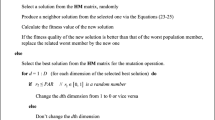Abstract
MIMO-OFDM is considered a key technology in emerging high-data rate systems. In MIMO-OFDM systems, channel estimation and signal detection are important to distinguish transmit signals from multiple transmit antennas. Previously, we have proposed a parallel detection algorithm using multiple QR decompositions (Q is an orthogonal square matrix, R is upper triangular matrix) with permuted channel matrix (MQRD-PCM) to reduce the system complexity of MIMO-OFDM. This method achieves a good BER performance with a low system complexity. However, since MQRD-PCM is a kind of parallel detection method, the wrong detection probability is increased due to the bad channel signal-to-interference plus noise power ratio (SINR) of the transmitted signals. As a result, the average BER performance is influenced by the wrong detection probability of the bad channel SINR. To overcome the above-mentioned problems, in this paper, we propose the high time resolution carrier interferometry and channel ranking based joint signal detection for MQRD-PCM/MIMO-OFDM.
Similar content being viewed by others
References
Cimini L. (1985) Analysis and simulation of a digital mobile channel using OFDM. IEEE Transactions on Communications 33: 665–675
Bingham J. A. C. (1990) Multicarrier modulation for data transmission: an idea whose time has come. IEEE Communications Magazine 28: 5–14
Zelst, A. V., Nee, R. V., & Awater, G. (2000). Space division multiplexing (SDM) for OFDM systems. In Proceedings of VTC (pp. 15–18).
Nallanathan A., & Chang L. Y. (2004). Eigenbeam-space division multiplexing for OFDM systems with optimum resource allocation. In Proceedings of GLOBECOM’04 (Vol. 4, pp. 2366–2370).
IEEE LAN MAN Standards Committee. (2002). IEEE draft standard for local and metropolitan area network-part 16: Air interface for fixed broadband wireless access systems—medium access control modifications and additional physical layer specifications for 2–11 GHz.
Koffman I., Roman V. (2002) Broadband wireless access solutions based on OFDM access in IEEE802.16. IEEE Communications Magazine 40: 96–103
Serbetli S., Yener A. A. V. (2006) MMSE transmitter design for correlated MIMO systems with imperfect channel estimates: Power allocation trade-offs. IEEE Transactions on Wireless Communications 5: 2295–2304
Khalighi M., Boutros J. J., Helard J. (2006) Data-aided channel estimation for turbo-PIC MIMO detectors. IEEE Communications Letters 10: 350–352
Ait-Idir T., Saoudi S., Naja N. (2008) Space-time turbo equalization with successive interference cancellation for frequency-selective MIMO channels. IEEE Transactions on Vehicular Technology 57: 2766–2778
Ahn C. (2008) Parallel detection algorithm using multiple QR decompositions with permuted channel matrix for SDM/OFDM. IEEE Transactions on Vehicular Technology 57: 2578–2582
Pirak C., Wang Z., Liu K., Jitapunkul S. (2006) Adaptive channel estimation using pilot-embedded data-bearing approach for MIMO-OFDM systems. IEEE Transactions on Signal Processing 54: 4706–4716
Honglei M., Juntti M. (2005) Space-time channel estimation and performance analysis for wireless MIMO-OFDM systems with spatial correlation. IEEE Transactions on Vehicular Technology 54: 2003–2016
Huang, L., Zheng, K., & Wang, W. (2005). Channel estimation based on delay-subspace filter for uplink of CDM-OFDMA system. In Proceedings of IEEE international symposium on microwave, antenna, propagation and EMC technologies for wireless communications (MAPE2005) (Vol. 2, pp. 1415–1418).
Natarajan B., Nassar C., Shattil S., Michelini M., Wu Z. (2001) High performance MC-CDMA via carrier interferometry codes. IEEE Transactions on Vehicular Technology 50: 1344–1353
Yokomakura K., Sampei S., Harada H., & Morinaga, N. (2006). A carrier interferometry based channel estimation technique for one-cell reuse MIMO-OFDM/TDMA cellular systems. In Proceedings of VTC 2006 (pp. 1733–1737).
Yokomakura K., Sampei S., Harada H., Morinaga N. (2005) A channel estimation technique for dynamic parameter controlled-OF/TDMA systems. Proceedings of IEEE PIMRC 1: 644–648
Kawai H., Higuchi K., Maeda N., Sawahashi M., Ito T., Kakura Y., Ushirokawa A., Seki H. (2005) Likelihood function for QRM-MLD suitable for soft-decision turbo decoding and its performance for OFCDM MIMO multiplexing in multipath fading channel. IEICE Transactions on Communication E88-B: 47–57
Author information
Authors and Affiliations
Corresponding author
Rights and permissions
About this article
Cite this article
Ahn, CJ. HTRCI and Channel Ranking Based Joint Symbols Detection for MQRD-PCM/MIMO-OFDM. Wireless Pers Commun 55, 485–499 (2010). https://doi.org/10.1007/s11277-009-9811-3
Received:
Accepted:
Published:
Issue Date:
DOI: https://doi.org/10.1007/s11277-009-9811-3




